On May 4th and 5th, 2022, the Maryland-National Capital Region Emergency Response System (MDERS) hosted its annual symposium. This year’s event, themed Reimagining the Threat Landscape, brought together stakeholders from across the National Capital Region and beyond to discuss timely events and topics germane to the homeland security and public safety enterprise. To accommodate ongoing public health concerns related to the COVID-19 pandemic, MDERS broadcast this year’s symposium live via Zoom to provide flexibility and convenience for participants to virtually watch specific portions or all of the event.
 Broadcast from Howard University’s WHUT studios in Washington, D.C., the first day of the symposium analyzed the events leading up to, during, and following the January 6th insurrection at the United States Capitol. Leaders from the District of Columbia Homeland Security and Emergency Management Agency (HSEMA), District of Columbia Fire and Emergency Medical Services (FEMS), and MedStar Washington Hospital Center, provided their unique experience tackling the complex issues faced by their agencies throughout the COVID-19 pandemic, the 2021 Presidential Inauguration, and the January 6th insurrection.
Broadcast from Howard University’s WHUT studios in Washington, D.C., the first day of the symposium analyzed the events leading up to, during, and following the January 6th insurrection at the United States Capitol. Leaders from the District of Columbia Homeland Security and Emergency Management Agency (HSEMA), District of Columbia Fire and Emergency Medical Services (FEMS), and MedStar Washington Hospital Center, provided their unique experience tackling the complex issues faced by their agencies throughout the COVID-19 pandemic, the 2021 Presidential Inauguration, and the January 6th insurrection.
Throughout the day, Darrell Darnell, a nationally recognized subject matter expert in homeland security and emergency management, moderated panel discussions with the speakers to further address specific challenges or areas or priority. The panels allowed the speakers to further explore their perspectives on how special events planning has and will continue to evolve in the wake of the insurrection, including leveraging the intelligence community, effective workforce allocation, and innovative ways to enhance community preparedness.
The second day of the symposium featured a variety of presentations facilitated by subject matter experts from governmental and academic institutions on the following emerging homeland security topics:

- Supply Chain Resilience
- The Power of Public/Private Partnerships
- Small Unmanned Aerial Systems in Public Safety and Healthcare Operations
- Naval Post Graduate School (NPS) Center for Homeland Defense and Security (CHDS) Information Session
- Best Practices for First Responder Psychological Safety and Health
 Symposium attendees engaged in real time with the speakers through the Zoom Video Communications platform to ask questions or weigh in on the topics discussed.
Symposium attendees engaged in real time with the speakers through the Zoom Video Communications platform to ask questions or weigh in on the topics discussed.
The event was well received by attendees and highlighted the need for further training on many of the topics that were discussed. MDERS will continue to provide opportunities for the MDERS stakeholder community addressing the many response complexities facing organizations and the broader homeland security enterprise.
MDERS will host next year’s symposium in the Spring of 2023. Please check the MDERS website for further information.


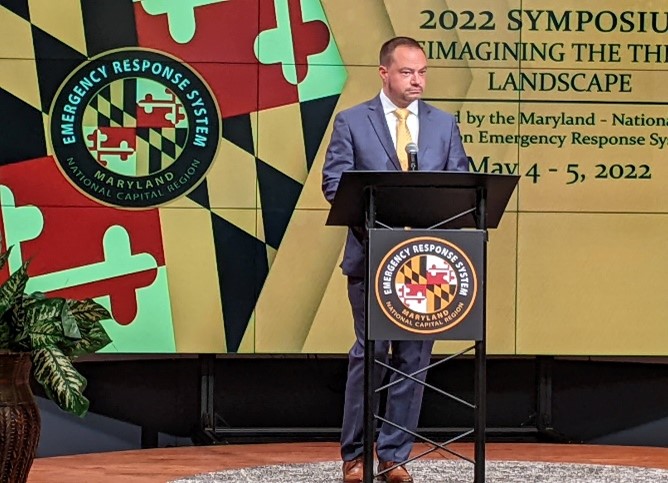
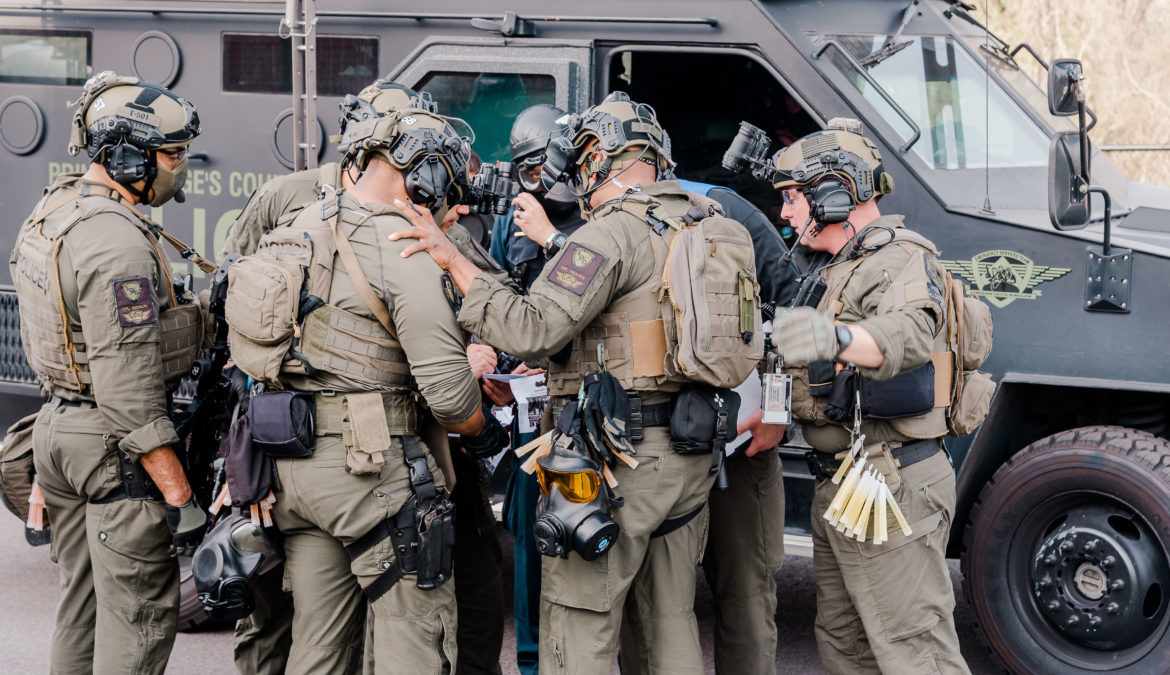
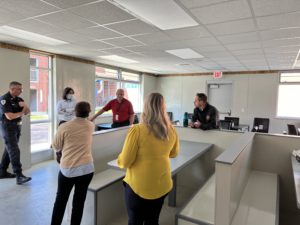 Planning efforts for this exercise cycle began in September 2021 for two exercises: a discussion-based, tabletop exercise (TTX), and an operations-based, full-scale exercise (FSE). Throughout the planning process, MDERS conducted bi-weekly planning meetings with PGPD leadership to establish exercise objectives, develop exercise scenarios, address logistical concerns, formulate timelines, identify participants, and assess needed resources for a realistic exercise environment. The planning team outline four primary objectives of the exercise series:
Planning efforts for this exercise cycle began in September 2021 for two exercises: a discussion-based, tabletop exercise (TTX), and an operations-based, full-scale exercise (FSE). Throughout the planning process, MDERS conducted bi-weekly planning meetings with PGPD leadership to establish exercise objectives, develop exercise scenarios, address logistical concerns, formulate timelines, identify participants, and assess needed resources for a realistic exercise environment. The planning team outline four primary objectives of the exercise series: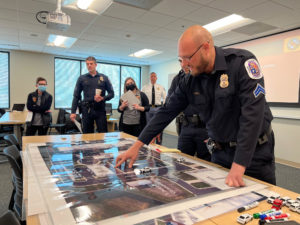 On March 2, 2022, PGPD conducted the first exercise utilizing the MDERS Tabletop In A Box toolkit. This discussion-based exercise allowed participants to work through three, distinct scenarios using a “crawl, walk, run” philosophy. This philosophy introduces increasingly complex elements allowing participants to progressively become familiar with the scenario and examine more intricate concepts. Twenty-two officers worked through these scenarios on an aerial-view map of the incident location using simulated models of real-world resources.
On March 2, 2022, PGPD conducted the first exercise utilizing the MDERS Tabletop In A Box toolkit. This discussion-based exercise allowed participants to work through three, distinct scenarios using a “crawl, walk, run” philosophy. This philosophy introduces increasingly complex elements allowing participants to progressively become familiar with the scenario and examine more intricate concepts. Twenty-two officers worked through these scenarios on an aerial-view map of the incident location using simulated models of real-world resources. The FSE consisted of two scenarios designed to measure any training gaps between patrol officers and the teams who have received additional specialized training. The first scenario began with an active threat incident inside a restaurant that transitioned into a suspect fleeing and barricading inside a nearby apartment. In addition to patrol officers, this scenario necessitated the involvement of PGPD’s Conflict Negotiations Team, Special Operations Division, Aviation Division, and K-9 Unit.
The FSE consisted of two scenarios designed to measure any training gaps between patrol officers and the teams who have received additional specialized training. The first scenario began with an active threat incident inside a restaurant that transitioned into a suspect fleeing and barricading inside a nearby apartment. In addition to patrol officers, this scenario necessitated the involvement of PGPD’s Conflict Negotiations Team, Special Operations Division, Aviation Division, and K-9 Unit.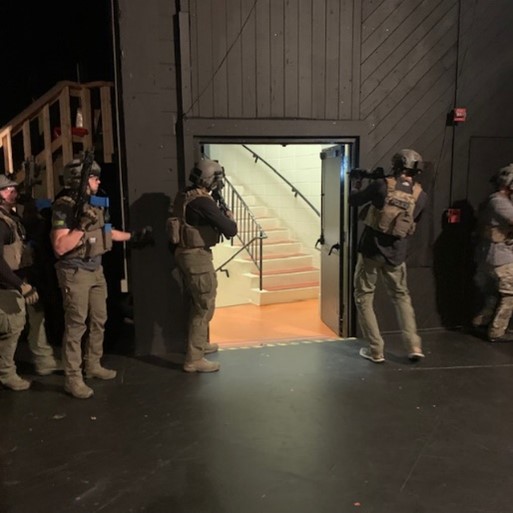
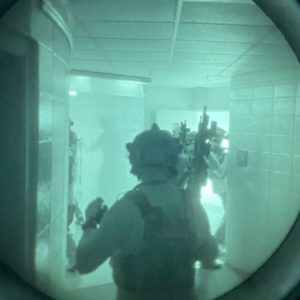 Montgomery County Police Department (MCPD) has built a comprehensive training program for their special operations division (SOD) personnel. With support from the Maryland-National Capital Region Emergency Response System (MDERS), 18 officers from MCPD recently participated in a local offering of the Tomahawk Close Quarter Clearance (CQC) – Methodical Clearance Course. This training combines best practices and techniques for tactical entry and follow-on movement procedures.
Montgomery County Police Department (MCPD) has built a comprehensive training program for their special operations division (SOD) personnel. With support from the Maryland-National Capital Region Emergency Response System (MDERS), 18 officers from MCPD recently participated in a local offering of the Tomahawk Close Quarter Clearance (CQC) – Methodical Clearance Course. This training combines best practices and techniques for tactical entry and follow-on movement procedures. The training occurred across five disparate locations throughout Montgomery County. The distinctive floorplan of each facility allowed operators to maneuver in diverse environments. The instructors provided real-time feedback to each trainee and the unit’s performance in the following areas: two-four-person room entries, room pie methods, angles/cross-pan, multiple rooms, de-confliction, stairway/hallway movement, single/dual access, and team size movement.
The training occurred across five disparate locations throughout Montgomery County. The distinctive floorplan of each facility allowed operators to maneuver in diverse environments. The instructors provided real-time feedback to each trainee and the unit’s performance in the following areas: two-four-person room entries, room pie methods, angles/cross-pan, multiple rooms, de-confliction, stairway/hallway movement, single/dual access, and team size movement.